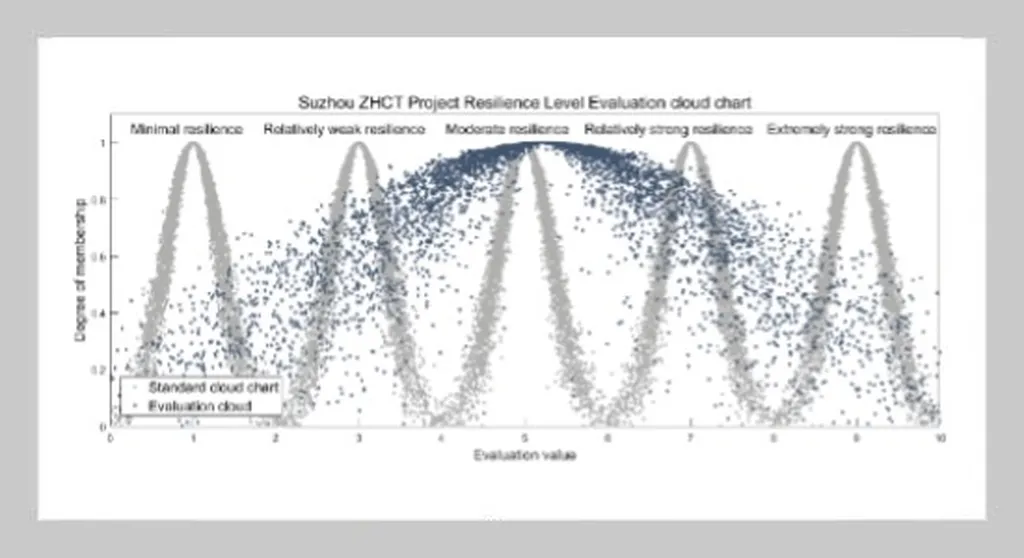In the ever-evolving landscape of construction, safety management stands as a critical pillar, particularly for super-tall building projects where the stakes are exceptionally high. A groundbreaking study led by Fangfang Zhang from the School of Management at Shenyang Jianzhu University has integrated resilience theory into the safety management of these towering structures, offering a novel approach to evaluate and enhance organizational resilience. Published in the *Journal of Applied Science and Engineering* (translated as *Journal of Applied Science and Engineering*), this research could redefine how the construction industry approaches safety, especially in the realm of super-tall buildings.
Zhang’s study introduces an improved fuzzy comprehensive evaluation method based on the cloud model, a sophisticated tool that brings clarity to the complex and often ambiguous nature of safety management. By analyzing two significant projects—the ZHCT project in Suzhou and the JL office building project in Shenyang—Zhang and her team identified key indicators that influence organizational resilience: robustness, efficiency, adaptability, and redundancy. These indicators are not just theoretical constructs; they are practical measures that can be applied to real-world scenarios to bolster safety protocols.
The research delves into the various phases of safety management, from avoidance to recovery and optimization, revealing how different factors come into play at each stage. “Organizational resilience is not a static concept,” Zhang explains. “It evolves and adapts, much like the projects themselves. Understanding this dynamic can help construction firms not only prevent incidents but also respond more effectively when they occur.”
The findings highlight a stark contrast between the two projects. The JL office building in Shenyang demonstrated higher overall resilience, particularly in the avoidance, absorption, recovery, and optimization phases. In contrast, the ZHCT project in Suzhou showed stronger resilience during the avoidance phase but lagged in the other areas. These insights are invaluable for construction firms looking to refine their safety strategies and ensure that their projects are not only completed on time but also with the highest standards of safety.
The commercial implications of this research are profound. In an industry where delays and accidents can lead to significant financial losses, enhancing organizational resilience can translate into substantial cost savings and improved project outcomes. By adopting the methods outlined in Zhang’s study, construction companies can mitigate risks, streamline their operations, and ultimately deliver projects that are safer and more efficient.
As the construction industry continues to push the boundaries of what is possible, the need for robust safety management practices becomes ever more critical. Zhang’s research offers a roadmap for achieving this goal, providing a framework that is both innovative and practical. “This is just the beginning,” Zhang notes. “As we continue to refine our methods and gather more data, we can expect to see even greater advancements in the field of safety management.”
For professionals in the construction industry, this research is a call to action. It underscores the importance of resilience and offers a clear path forward. By embracing these findings, companies can not only enhance their safety protocols but also position themselves as leaders in an increasingly competitive market. The future of construction is not just about reaching new heights; it’s about doing so safely and sustainably. And with the insights provided by Zhang and her team, that future is looking brighter than ever.

